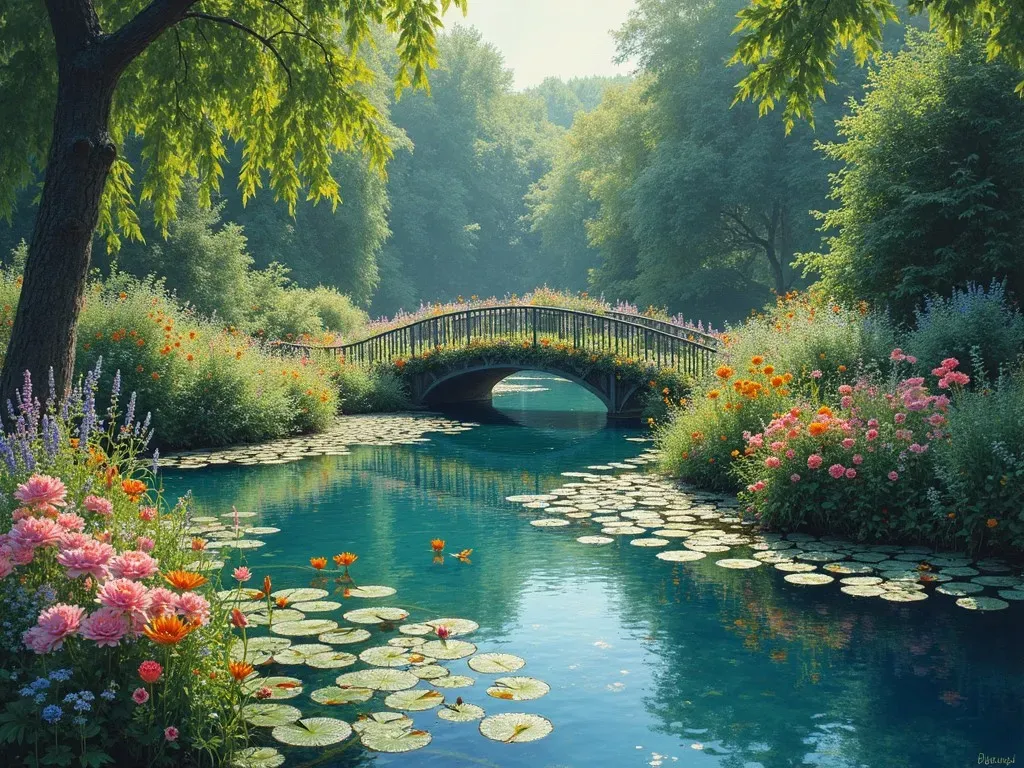Monet paintings landscapes capture the beauty of nature through the unique lens of the impressionist movement, founded by claude monet himself. His vibrant depictions of various landscapes showcase a masterful use of color, light, and perspective, allowing viewers to experience the essence of the scenes he painted.
The Essence of Impressionism in Monet’s Landscapes
Claude Monet, born on November 14, 1840, in Paris, is renowned for his role in establishing the Impressionist movement, which revolutionized the art world. His dedication to plein air painting—a technique that involves painting outdoors to capture the natural light and ambiance—was pivotal to his artistic approach. Through his landscapes, Monet sought to express how he perceived nature, with an emphasis on the fleeting effects of light and color.
This approach is evident in some of his most notable works, such as Impression, Sunrise and Water Lilies. Monet’s landscapes invite the viewer to see beyond the details of the subject matter, focusing instead on the emotional resonance of the colors and forms.
Did You Know?
According to art historian Tim Clarke, Monet produced over 2,500 paintings in his lifetime, and an impressive 323 of those works are landscapes.
Key Highlights of Monet’s Landscape Paintings
Here are notable features that characterize Monet’s landscape artwork:
| Feature | Description |
|---|---|
| Color Palette | Bright, vibrant colors that shift intensively under natural light. |
| Brush Technique | Short, deliberate brush strokes, often applied rapidly to evoke emotion and movement. |
| Focus on Light | The interplay of light on objects reflects changing times of day and weather conditions. |
| Nature’s Mood | Each painting embodies an emotion, reflecting Monet’s mood and feelings during the painting process. |
Notable Monet Landscape Paintings
-
Impression, Sunrise (1872)
- This painting is the iconic work that gave Impressionism its name. It captures the port of Le Havre at dawn with vibrant hues of orange and blue, effectively showcasing the play of light on the water.
-
Water Lilies (1916-1926)
- A series of approximately 250 paintings, these works exhibit Monet’s garden in Giverny, where he cultivated his famous water lily pond. The serene reflections on the water offer a meditative quality.
-
The Artist’s Garden at Giverny (1900)
- This vibrantly colored painting reflects the riot of flowers in Monet’s garden, emphasizing his profound connection to nature and beauty.
-
Haystacks (1890)
- A series that captures the same haystack in different lighting and weather conditions, ultimately demonstrating Monet’s fascination with perception and environment.
-
The Japanese Bridge (1899)
- Showcasing a picturesque bridge in his garden, the painting is rich with lush greens and colorful flowers, embodying peace and tranquility.
The Influence of Nature on Monet’s Work
In his ongoing quest to accurately capture the ephemeral qualities of nature, Monet sought Inspiration from his own surroundings, particularly his garden in Giverny. He remained devoted to exploring the seasonal changes of flora and fauna, a theme that runs throughout much of his landscape work.
Monet’s Garden at Giverny
Monet’s Giverny garden was not only a backdrop but also a subject of his art. Here are a few key aspects of this vibrant location:
- Diverse Flora: Over 100 varieties of plants were meticulously planted, capturing the changing colors across the seasons.
- Water Feature: The water lily pond became an iconic motif in Monet’s paintings, reflecting the tranquility and beauty of nature.
- Color and Light: Monet experimented with various times of day and atmospheric conditions, which added depth and diversity to his landscape works.
Monet’s Legacy in Landscape Painting
Claude Monet’s contributions to landscape painting are immense and enduring. His innovative Techniques enabled succeeding artists to experiment with color, light, and form. The Impressionist style he popularized continues to influence contemporary landscape painting and art in general.
FAQs About Monet Paintings Landscapes
Q: What is the significance of the term "Impressionism"?
A: The term "Impressionism" originated from Monet’s painting Impression, Sunrise, underlining the movement’s focus on capturing a momentary impression rather than a detailed representation.
Q: How did Monet’s style evolve over his career?
A: Monet’s early work adhered closely to realism, but as he matured as an artist, he adopted a looser, more expressive style that prioritized the interplay of light and color.
Q: Are there specific geographic locations associated with Monet’s landscapes?
A: Yes, many of Monet’s works feature locations such as his home in Giverny, the coastal regions of Normandy, and various parks around Paris.
Q: Where can I find more information about Monet’s landscape paintings?
A: For comprehensive details on Monet’s life and works, visit the Metropolitan Museum of Art or the WikiArt Collection.
By examining Monet’s enchanting landscapes, we are not only witnessing the beauty of nature but also a profound artistic journey that brings viewers closer to the essence of the Impressionist movement. His ability to represent fleeting moments with timeless beauty remains a significant contribution to the world of art.
